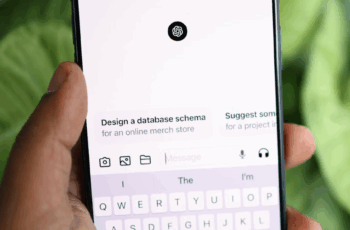Do You Have All These Elements In Your Brand Guidelines?

When people think about branding, visuals often steal the spotlight – think logos, colour palettes, and typography. But if your messaging isn’t clear and consistent, even the slickest of brand designs won’t make the right impact.
Your brand messaging is the foundation for how you communicate – both within your business and out in the world. It makes sure your team, partners, and content creators are all on the same page. When you nail it, your customers will instantly know who you are and what you stand for.
Without full brand guidelines in place, things start to fall apart. Conflicting messages can leave your customers confused, or – worse – alienated. And we don’t need to tell you that confusion rarely leads to conversion.
The missing piece in most brand identities
It’s easy to see why so many businesses get swept up in visual branding. A jazzy new logo or fresh website design is exciting. The problem with this is that, all too often, messaging guidelines are an afterthought – and that’s if they even exist at all.
The truth is that your brand voice, tone, and story deserve just as much attention – if not more. Visuals get you noticed, but words are what spark connection. Messaging guidelines serve to guarantee that every blog, social post, sales deck, or pitch feels like it came from the same brand – no matter who created it.
Tailoring your guidelines to your brand’s needs
Not every business needs a 100-page brand bible. What you include should reflect your size, your structure, and how you communicate.
If your business is on the bigger side, you might want to take a more in-depth approach – with detailed personas, tone of voice breakdowns, and scenario-based examples. Small businesses can keep things more streamlined, but you still need enough clarity to guide your content and conversations.
At MYC, we’ve built out a set of brand messaging guidelines that work for us – and we’ve broken it down so you can pick out what’s most useful for your brand.
What’s in our brand guidelines?
Brand essence: This section is your brand’s elevator pitch. It should capture who you are, what makes you different, and the unique way you meet your customers’ needs – in just a few short paragraphs.
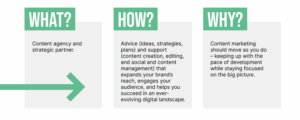
Brand statements: Brand statements distil your identity into concise core messages – outlining your purpose, long-term ambitions, and giving you a snappy slogan and boilerplate to show your audience who you are and what you stand for.
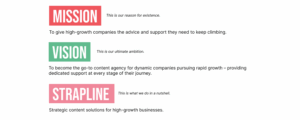
Values: These are the everyday principles that shape how your team thinks, collaborates, and delivers – demonstrating what you do, and how you do it.

Audience: This section identifies key personas your business wants to attract – like founders and marketers – and outlines their needs and requirements. Ultimately, it helps you tailor your messaging to meet those needs.
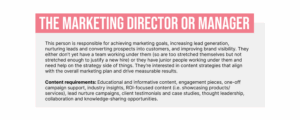
Key messages: What are the core strengths of your products or services? Your key messages should answer this question clearly and confidently – showing clients what you offer and why you’re the best business to deliver it.
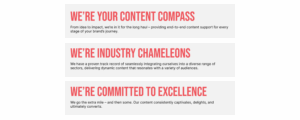
Tone of voice: What does your brand sound like? No matter if you’re looking to spark interest, earn trust, or help clients take that final step, your tone of voice should express your personality clearly and consistently.
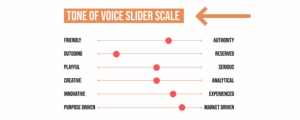
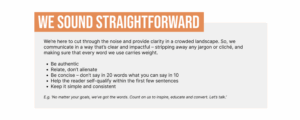
House style: Your house style lays out the rules everyone representing your brand should follow to keep your content true to your brand guidelines on every platform. It’s something we recommend every business defines to help teams stay aligned.
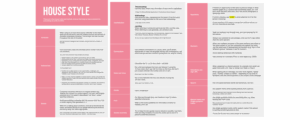
Looking for more examples? We love how stationery brand Papier’s guidelines reflect the classy elegance of their product, while creating a sense of magic and wonder around it. You can find plenty of other brands’ online, too.
Make sure your brand messaging lives on
There’s little point in crafting beautiful brand guidelines if no one uses them. If you want to make sure your brand’s voice is really embedded, it needs to become second nature – that goes for if someone’s writing a LinkedIn post, a job ad, or a customer email.
It’s why we always recommend appointing brand guardians: individuals (or teams) responsible for upholding and championing your messaging across different channels. Regular check-ins, training, and reminders help too – especially when you’re working with freelancers or agency partners.
Keep your guidelines fresh
Just like everything else in your business, your brand messaging should evolve.
Your audience might shift. Your offering might expand. Your tone might mature. These are all reasons why it’s important to review your guidelines at least once a year – and following any major rebrand or strategy changes. Tweak, test, and refine as needed.
Need help creating or updating your guidelines?
If you’ve made it this far, chances are your brand messaging could use a refresh – or a more solid foundation.
We help businesses like yours clarify their voice, tone, and messaging through hands-on brand workshops and ongoing strategic support. From a blank page to a full refresh, we’ll turn your brand thinking into a practical, everyday tool.




